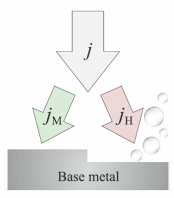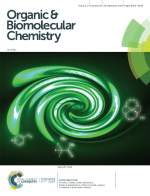
A Model for the Faradaic Efficiency of Base Metal Electrodeposition from Mildly Acidic Baths to Rotating Disk Electrodes
The paper authored by
N. Kovács,
V. Grozovski, P. Moreno-García, P. Broekmann and
S. Vesztergom
is published in Journal of The Electrochemical Society (2020, vol. 167, p. 102510).
Abstract:
Base metal electrodeposition is inevitably accompanied by parasitic hydrogen evolution. This results in a less-than-unity Faradaic efficiency (FE m ) of metal deposition that is known to depend on many factors like the applied current density, the composition (primarily, the metal ion concentration and the pH) of the depositing bath, and the rate of convection. Analysing how FE m values depend on the current density j under well-defined transport conditions (e.g., by the use of rotating disk electrodes) became an integral part of industrial approaches to the screening of bath compositions applied for base metal electroplating. Yet FE m (j) curves are still not very well understood, and most studies content themselves with their mere qualitative analysis, reaching no conclusions as to the mechanisms of the underlying reactions. We attempt to fill this gap by creating a simple model for FE m (j) curves based on first principles. The presented model can very well be fitted to experimental data obtained for the electrodeposition of nickel and of cobalt, and it yields a consistent set of kinetic and transport parameters over a broad range of pH, rotation rates and current densities. The presented model thus paves the way towards a knowledge-driven benchmarking strategy of base metal electroplating baths.
